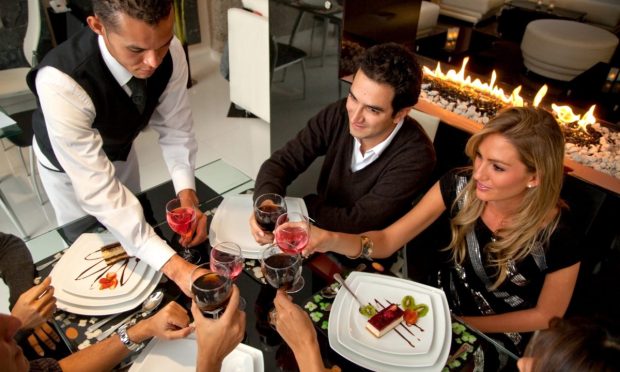Restaurants Embrace Digital to Fight Rising F&B Prices

As restaurants deal with sky-high inflation and widespread supply chain shortages, old pen-and-paper (or even spreadsheet and Word document) bookkeeping and inventory management methods will no longer cut it. Keeping up with these challenges requires digital integration across operational processes, offering real-time information about prices and inventory and enabling quick pivots when circumstances suddenly change.
Jackson Strayer-Benton, beverage director for Heirloom Hospitality, which is comprised of Vermont restaurants Hen of the Wood, Doc Ponds and Prohibition Pig, discussed in an interview with PYMNTS how digitizing back-of-house processes is helping the brands weather inflationary challenges. The digital shift provides a more comprehensive insight into inventory management and ever-changing ingredient and commodity prices.
“If we pour a beer at 12 ounces, I can build the recipe at home in a computer and then connect that to the button that is pressed in [our point-of-sale (POS) system],” Strayer-Benton said. “So, now I can print out a sales document that can give us, for the month of April, what the total amount of items are, what the total quantity that we sold of that one particular beer was, what the cost of those 12 ounces of beer was, … what the profits made from that was and what the cost percentage is.”
He specified that the company uses solutions from restaurant and hospitality accounts payable (AP) automation and payments software company Plate IQ, from restaurant management software platform Restaurant365 and from POS provider Toast.
Real-Time Reactions
The Consumer Price Index for All Urban Consumers (CPI-U), reported by the U.S. Bureau of Labor Statistics (BLS) in mid-May, revealed that food away from home (i.e., restaurant) prices rose 0.6% month-over-month in April and 7.2% year-over-year.
Additionally, these figures only reflect the costs that restaurants are passing onto consumers. Based on the even faster rate of consumer price inflation in the grocery industry (1% for the month and 11% for the year in April), it is clear that restaurants are absorbing much of the cost. Additionally, not all items are inflating at the same rate, and many items’ prices have been suddenly skyrocketing in difficult-to-predict ways.
“In the past, we would do food inventory once a year, and then we would learn after that food inventory what our COGS — cost of goods sold — what that percentage was at the end of the year for the previous year,” Strayer-Benton said.
As such, if the restaurants were running at a 50% cost for food in a given year, they would not know until the end of that year, making it impossible to make changes in the moment to quickly improve margins. He added that, with the restaurants’ new digitally integrated systems, the brands can have “much deeper and quicker information.”
As such, if a given item’s price soars, the brands can react shortly thereafter by modifying recipes and/or by increasing prices for consumers.
More Than a Yes Person
In addition to inflation, labor is a top-of-mind challenge for many independent restaurant operators today.
Research from PYMNTS’ March study, Main Street Economic Health Survey: Navigating Economic Uncertainty, created in collaboration with Melio, which drew from a survey of more than 500 business owners on Main Street U.S.A. conducted between January and February, found that 41% or respondents were having difficulties hiring employees. Additionally, a third of these businesses cited these challenges as the single greatest obstacle they face.
Get the study: Main Street Economic Health Survey: Navigating Economic Uncertainty
These challenges can be especially pressing for fine dining establishments, in which servers’ expertise is part of the experience. Strayer-Benton cited the example of an expensive meal that he had recently had at an upscale restaurant wherein the server, instead of offering additional insight into the food and beverage options, was simply “a yes person.”
In contrast, he argued, a better experience would be when the server offers their trained input where desired, creating a more comprehensive dining experience. He noted that, if the diner is spending hundreds of dollars, they should have that expertise available to them.
“With [all the recent] changeover in staff, it’s been a lot of work, a lot education, a lot of building,” he said, “starting from the ground zero and building up to really educate and get the staff to be excited about what we’re doing.”
The Experience-Capacity Tradeoff
In a move to retain these highly trained servers, Strayer-Benton noted, Heirloom Hospitality prioritizes the employee’s experience over meeting as much as the demand as possible. He added that rather than taking a “how many people can we fit through the door” approach, the restaurants may reduce the number of customers it serves to improve employees’ (and in turn diners’) experiences.
“We’d rather say we were going to take away this portion of seating, because we don’t have enough staff, and they’re not going to be able to handle it, and if we were to continue at this pace for the next three months, we would just lose the people we have,” Strayer-Benton said. “Between that and the cost of goods increasing over overall, it’s an uphill battle.”
